Mastering Skate Video Editing Techniques
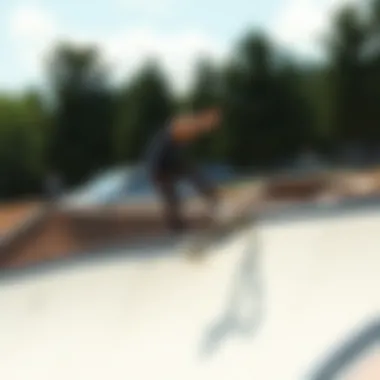
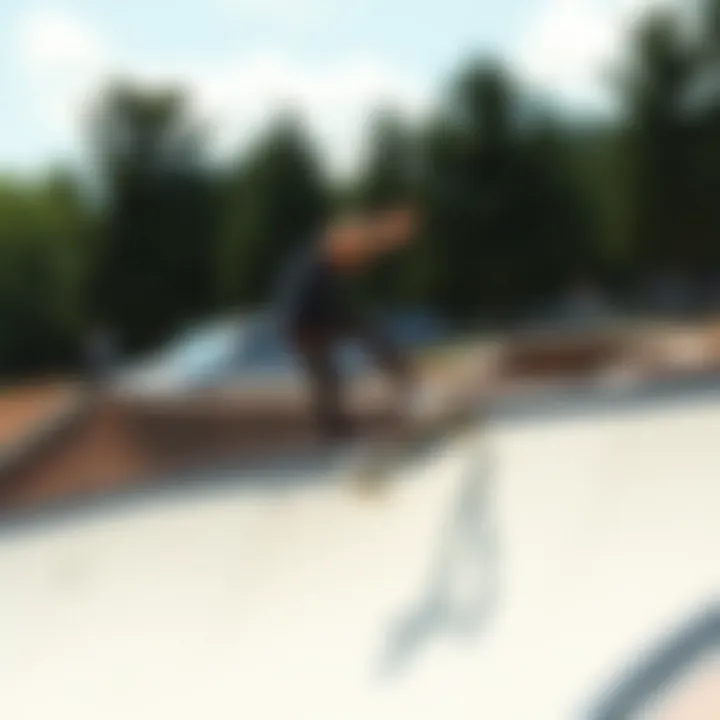
Intro
Editing skate videos is more than just cutting up footage and throwing in some music. It's an art form that mirrors the spontaneity and creativity inherent in skateboarding itself. This guide seeks to illuminate the editing journey, whether you're just starting out or you're a seasoned editor looking to refine your skills.
Skateboarding captures a unique culture of freedom and expression. Hence, how you edit these videos can profoundly impact how viewers perceive the sport. With the right techniques and mindset, you can effectively showcase tricks, transitions, and the raw energy of skate culture.
The essence of this guide delves into various methods and practices to enhance your editing skills. From tips for capturing the perfect shot to insights on software that best suits skate videography, every detail comes into play.
Tips and Techniques
When it comes to editing skate videos, understanding your material is crucial. Here are some key elements to consider:
Beginner Tips for Skate Video Editing
- Plan Your Shots: Before even hitting record, visualize the footage you want. Think about angles that reflect your style.
- Learn Basic Cuts: Familiarize yourself with straight cuts and crossfades. These are foundational tools in creating a cohesive flow.
- Use B-Roll Wisely: Capture additional shots, like the environment or reactions, to fill your edits with character. This helps in storytelling.
- Practice Color Correction: A well-color-graded video can significantly enhance the quality. Start with basic color settings before exploring advanced techniques.
Advanced Techniques for Mastery
- Speed Ramping: This can add dramatic effects. Use it to emphasize tricks or slow down moments for more impact.
- Sound Design: Overlay sounds or use ambient noise to immerse viewers in the skate environment. The audio complements visuals.
- Montage Sequences: Create a series of shots that transition smoothly into one another to convey energy and excitement, making the viewer feel the thrill of skateboarding.
- Dynamic Text Graphics: Engaging titles and lower-thirds can enhance storytelling, but ensure they don’t steal focus from the skating.
Editing is like skateboarding; it requires skill, practice, and a bit of flair.
Safety and Gear
Safety is paramount, not just for the skater but for the editor as well who must avoid unwanted hiccups. While editing might seem like a risk-free job, ensuring that your gears, like cameras, are well-handled is essential to a smooth filming and editing experience.
Essential Safety Practices
- Keep Your Gear Secure: Use protective cases for cameras and equipment to prevent damage. A cracked lens can derail your project.
- Wear Protective Equipment: When filming, it's easy to get engrossed in the moment. Always have a helmet on.
- Manage Battery Life: Keeping backup batteries can save you from missing crucial shots; a dead battery means lost footage.
Gear Reviews and Recommendations
For folks looking to scale their skate video editing, investing in quality gear can make a significant difference. Consider the following:
- Cameras: The Canon EOS R is highly rated for its video quality and flexibility.
- Editing Software: Programs like Adobe Premiere Pro offer extensive features conducive for intricate skate edits.
- Microphones: A good shotgun mic can capture the ambient sounds of skating, lending authenticity to your video projects.
Intro to Skate Video Editing
In the world of skateboarding, the art of video editing goes hand-in-hand with the culture itself. Editing skate videos isn’t merely about cutting clips together; it’s about capturing the raw energy and spirit of the sport. The importance of this section lies in laying a solid foundation for understanding both the technical and artistic aspects of editing. It’s essential for editors to appreciate the relationship between skate culture and film, as this context enriches the viewing experience and conveys the emotion behind each trick.
Understanding the Skate Culture
Skate culture is a rich tapestry woven with values like creativity, rebellion, and community. It's not just about performing tricks; it's about showcasing a lifestyle that resonates with fans and fellow skaters alike. Whether it’s the underground sessions at a local pool or a full-blown vert competition, each moment tells a story. By embedding chops from this culture into the edits, you communicate more than just visuals; you relay a narrative that speaks to skaters and those who admire them. This authenticity makes the resulting videos relatable, leaving a lasting impression on viewers.
Purpose of Editing Skate Videos
Editing skate videos serves several critical purposes that elevate the audience's experience. To begin with, editing enhances the viewer's engagement by presenting captivating footage that highlights the tricks and the environment. Here are some noteworthy factors:
- Highlighting Skills: The way tricks are cut and showcased can make or break how impressive a skater looks. Effectively editing can showcase a well-timed kickflip or a complex line through the streets.
- Creating Aesthetic Appeal: Adding creative angles, transitions, and effects can amplify visual interest and elevate standard footage into a work of art.
- Setting the Tone: The right editing rhythm can evoke emotions. A high-energy edit filled with fast cuts matches the thrill of skateboarding, while slower edits may give weight to particular moments, suggesting a deeper introspection.
- Storytelling: Every skate video has a story. It might be the journey to a particular trick, the evolution of a skater, or a celebration of a skate spot. The edit is where these elements come together to narrate that story.
In sum, comphrensve skate video editing is a vital part of this artistic expression, weaving together culture, purpose, and aesthetic to create something powerful. For athletes, coaches, flyers, or anyone venturing into video editing, understanding these principles lays the groundwork for creating impactful skate video content.
"Through editing, you can turn a simple skate clip into a narrative that resonates. It's not just about the tricks; it's about the story they tell."
Pre-Production Planning
In the realm of skate video editing, Pre-Production Planning stands as the unsung hero of the editing process. It's the backbone that supports the entire journey from concept to completion. Planning ahead not only lays a foundation for a smooth operation but also enhances creativity and minimizes potential roadblocks. A well-thought-out pre-production plan can save countless hours of time during the filming and editing phases, enabling editors to focus on what really matters: capturing the essence of skate culture.
Conceptualizing Your Video Theme
Determining the theme of your skate video might sound like a simple task, but in reality, it requires a good amount of thought and creativity. Think of a theme as the soul of your project; it should resonate with your audience and reflect your personal style. Will you focus on a specific location, a series of tricks, or perhaps the community aspect of skating? Here are some steps to help conceptualize:
- Target Audience: Know who you are speaking to. Are they beginner skaters, seasoned pros, or maybe even fans of the sport?
- Visual Style: Decide whether you want a gritty realism or a polished look. This will affect your shooting techniques and editing style.
- Storyline: Consider a narrative arc. Even a skate video can have a story—like following a skater’s journey or exploring the local skate scene.
- Mood and Tone: Think about whether your video is energetic, mellow, or provocative. The feel of the video will guide your editing choices.
Having a clear theme can streamline your production and shape your editorial decisions, making the finished product cohesive and compelling.
Choosing Appropriate Locations
Location is everything in skate videos; the right backdrop can significantly elevate your footage. When scouting for the perfect spot, think about what aligns with your video's theme and the skating style. Here’s what to keep in mind:
- Accessibility: Ensure that the locations are easy to reach for your crew and skaters. You don’t want to waste time navigating difficult terrains.
- Variety: Different locations can bring diverse visuals. Parks, urban settings, and natural landscapes can all offer a unique aesthetic.
- Permissions: If you plan to film in private or restricted areas, getting the necessary permissions ahead of time is crucial.
- Lighting Conditions: Natural light can greatly affect your footage. Plan for shooting during golden hour or consider locations with ample lighting.
Selecting the right locations can enhance not only your visuals but also the overall theme and message you aim to convey.
Assembling the Right Crew
No video project succeeds in isolation; it takes a village, or in the case of skate videos, a solid crew. The people involved can impact the overall creativity and execution. Think about the following roles when assembling your team:
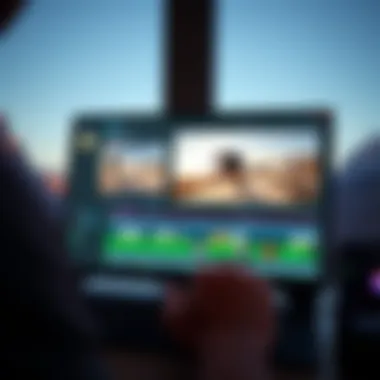
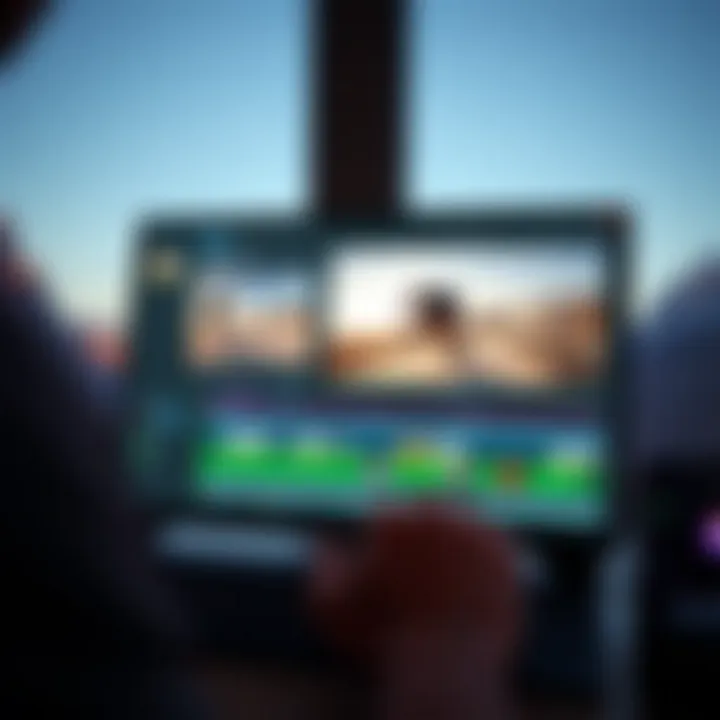
- Cameraperson: A skilled camera operator who understands skate videos and can capture action shots effectively.
- Skaters: They are the heartbeat of your video, so choose talents who align with your vision. They should not only be skilled but also comfortable in front of the camera.
- Production Assistant: This person can help run errands, look after gear, and keep things organized, allowing the crew to focus on creativity.
- Editor: If you're not editing yourself, find someone who shares your vision and can enhance the narrative through their technical skills.
Engaging the right people ensures that every aspect of your video—from the action to the post-production—comes together seamlessly.
In summary, Pre-Production Planning acts as a roadmap for your skate video journey. By conceptualizing themes, selecting suitable locations, and gathering the right crew, you set the stage for a project that captures the raw, vibrant life of skate culture.
Filming Techniques
Filming techniques are the backbone of skate video editing. They help set the tone, dictate rhythm, and ultimately reflect the skate culture that the video aims to encapsulate. Each choice made during filming influences the story you want to tell. If a skater performs a trick but it's shot from a bad angle, the impact could vanish. Thus, understanding and employing the right filming techniques can make or break the final edit.
Camera Equipment and Settings
Choosing Cameras
Choosing the right camera isn't just a matter of flipping a coin. The cameras used for shooting skate videos need to capture high-speed action without sacrificing quality. A camera like the Sony a7 III, known for its impressive low-light capabilities and fast autofocus, is often favored by filmmakers. Its ability to produce crisp, sharp images, even in tricky lighting, makes it a solid choice for those wanting to highlight the electrifying moments skaters create.
However, while a high-end camera can elevate your project, it does come with a price tag that can be a deal-breaker for some. There are also more budget-friendly options, like the Canon EOS Rebel series, which can deliver decent quality without breaking the bank. Your final decision should be based on your specific needs, style, and budget.
Understanding Frame Rates
Frame rates dictate how smooth the action appears on screen. Common frame rates for skate videos range from 24 to 60 frames per second (fps). Opting for a higher frame rate, such as 60 fps, can allow for cleaner slow-motion shots when capturing tricks. This gives viewers the chance to appreciate the skill involved in executing complex maneuvers.
On the flip side, shooting at lower frame rates, like 24 fps, can bring a cinematic feel to the footage, emphasizing the narrative aspect rather than just the sharpness of the moves. So, balancing between frame rates means determining your aim for the final product—whether to captivate viewers with artistic style or breathtaking action.
Using Tripods and Gimbals
Stability in filming is crucial, especially in action sports like skating where quick movements are the norm. Tripods can provide steadfast shots that give a sense of permanence, ideal for scenes capturing wide angles of iconic spots or laid-back vibes.
On the other hand, gimbals enhance mobility while keeping shots steady. They help generate smooth videos that reflect the fluidity of the skate tricks themselves. The DJI Ronin-S is known for being lightweight yet resilient, perfect for skate videographers who are on the move. A key decision here lies in whether you want the smooth fluidity that a gimbal can provide or the stable structure that a tripod offers.
Angle of Shots
Static vs. Dynamic Angles
Static angles, as the name implies, remain fixed during filming. They're great for establishing shots and can lend a sense of groundedness. But using dynamic angles—changing the shot orientation as the skater moves—can inject energy and excitement into the footage, making it feel alive and engaging. The choice often boils down to what story you’re trying to tell; a mix of both will usually yield the best results.
Close-Ups and Wide Shots
Close-ups offer viewers an intimate look at the skater's expressions or the details of their trick, while wide shots can capture the entire scene, including the environment around the skater. Together, these shots create a balance and keep the audience engaged, ensuring different perspectives throughout the video. Experimenting with these angles is essential in the editing room, as they will shape how the final product resonates with the audience.
Capturing Action Moments
Anticipating the Action
Keeping your eye on the skater and predicting their next move is a skill itself. If you can anticipate action moments, you’ll be poised to capture those awe-inspiring tricks just at the right time. This anticipation elevates the production quality and ensures no critical parts are missed.
Using Slow Motion
Slow-motion captures the intricate details of tricks. It lets viewers appreciate the finesse and precision of movements that are, in reality, only fleeting moments. However, it’s important to use slow motion judiciously, as overdoing it can lose the video’s momentum and dull the excitement. Striking the right balance can truly turn an average edit into something memorable and impactful.
End
In summary, the filming techniques are integral to creating engaging skate videos. They shape not just the visuals but also the viewer's experience and emotional connection to skate culture. By mastering these techniques and being intentional in your choices, you set the stage for a polished edit that honors the sport.
Post-Production Workflow
The post-production phase is where the magic really happens in skate video editing. It’s the stage where raw footage comes to life, morphing into something that not only captures the thrills of skating but also tells a compelling story. Without effective post-production, even the most exhilarating footage can fall flat. Thus, mastering this workflow is a must for any ardent editor.
Selecting Editing Software
Choosing the right editing software is crucial. The tool you pick can either simplify your workflow or complicate it. It's like choosing your skate deck; the right one can enhance your performance, while a poor choice might hinder it.
Comparison of Popular Editing Tools
When diving into the sea of editing software, you come across big names like Adobe Premiere Pro, Final Cut Pro, and DaVinci Resolve. Each has its distinct flavor, tailored for varying needs.
- Adobe Premiere Pro: Known for its versatility, this software is widely used in the industry. Its seamless integration with other Adobe products gives it an edge, making it a go-to for advanced editors.
- Final Cut Pro: Great for Mac users, its magnetic timeline offers a unique editing experience that appeals to many creatives. It's fast and efficient but may have a learning curve for beginners.
- DaVinci Resolve: This software stands out due to its powerful color grading features. It is an excellent option for those wanting to achieve vibrant visuals.
"Choosing the right editing software is crucial for editing skate videos effectively. Your software can either enhance or complicate your workflow."
Features to Look For
Not all editing software is created equal. You should keep an eye out for certain features that enhance the editing experience. The right set of tools can save you time and improve your final product.
- User Interface: A clean, intuitive layout is essential. If you can’t find tools quickly, your work can get bogged down.
- Support for Various Formats: With increasing camera technology, having software that can handle different formats is necessary. You’ll want the flexibility to upload any footage without sacrificing quality.
- Effects and Transitions: A variety of effects can add creativity to your edits. Whether it’s smooth transitions or dynamic speed changes, these features can elevate your skate video.
For example, Final Cut Pro’s keyframing allows for precise control of effects and transitions, while Premiere Pro also excels in this area with extensive plugin availability.
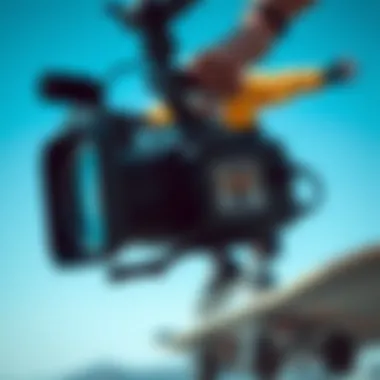
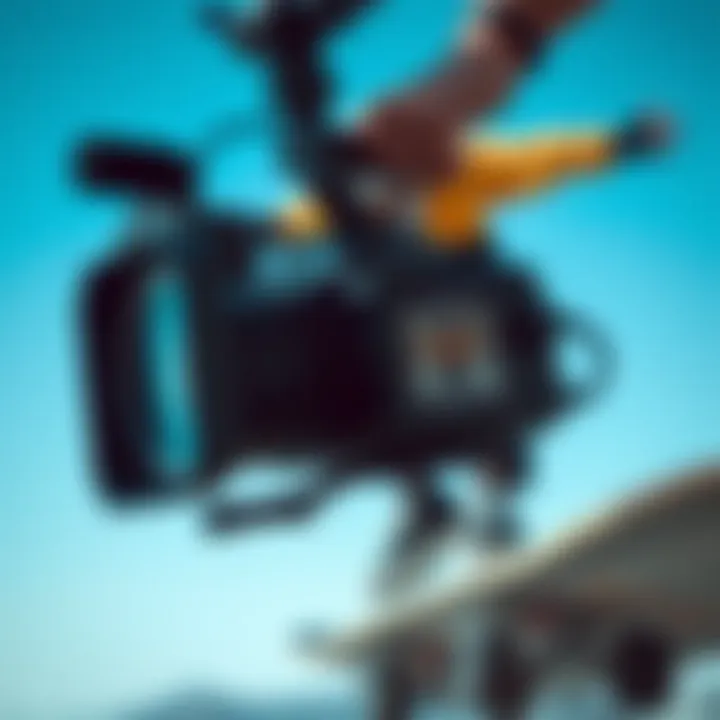
Importing and Organizing Footage
Once the software is selected, it’s time to import and organize your footage. This stage is often overlooked, but keeping your files orderly can make the entire editing process smoother. Think of organization like how a skater organizes their tricks; if things are scattered, it gets confusing.
When you import clips, creating folder structures - such as separating by locations or themes - helps keep track of your material. Naming files descriptively can save headaches later on. This may seem like extra work upfront, but when you have dozens of clips, it becomes invaluable.
Cutting and Arranging Clips
Now comes the critical part - cutting the footage down to the essentials. This step involves sifting through hours of recordings and selecting the best moments. It’s about telling a coherent story while showcasing the most thrilling parts of the skate sessions.
Start by laying down a rough cut. Focus on capturing the flow of tricks while maintaining transitions that feel natural. Ideally, your edit should have rhythm, echoing the beats sometimes found in the background music.
After the rough cut is complete, you can begin refining your arrangements. This might involve synchronizing actions to the soundtrack, leading to an engaging final product. Remember, less can often be more, so don’t be afraid to trim the fat and keep only what serves the story.
Creating a Narrative
Crafting a compelling narrative in skate video editing can be the difference between a clip that’s just enjoyable to watch and one that really resonates with the audience. In a space where every trick and every scene is full of raw energy, telling a story can captivate and engage viewers on an emotional level.
The importance of narrative lies in its ability to guide the viewer through the footage, turning a series of awesome tricks into a cohesive experience. Just like a great novel or film, a well-edited skate video has a beginning, middle, and end. It leads the viewer through an emotional journey that may evoke feelings of exhilaration, thrill, or nostalgia. Whether you're showcasing a day-out skating in the city or highlighting a specific skate spot, thinking about this flow can elevate the video's impact.
Understanding Flow and Rhythm
Flow and rhythm are the heartbeat of any skate video narrative. The way you sequence shots and the pacing of the edit plays a crucial role in how the viewer experiences the footage.
Consider these components when establishing flow:
- Shot Transitions: Smooth transitions between shots can create a seamless narrative. A hard cut can add impact, while a slow fade can convey a sense of calm. Use pacing to reflect the energy of your video. Fast cuts can make the viewer feel the thrill of action, while longer scenes might convey a sense of chill or pause.
- Music Integration: Choose a soundtrack that matches the ebb and flow of your footage. For instance, you might select upbeat tracks for high-energy tricks and slower tunes for more reflective transition scenes.
- Visual Rhythm: Pay attention to how each trick lines up with the cuts. Matching the beats of the music with impactful tricks can make the video feel tight and well-crafted. The rhythm you establish can guide the audience through the most exciting parts, emphasizing the skate culture experience with additional layers.
Incorporating Quality B-Roll
While the main action footage is essential, incorporating quality B-roll can enrich your narrative and provide context to the primary action.
B-roll can be anything from close-ups of a skateboard rolling on pavement to wide shots of the skating environment. Here are a few considerations:
- Supplementary Context: Use B-roll to give viewers additional insights into the story. Shots of friends laughing, the city backdrop, or the preparation before a trick can deepen the narrative significantly.
- Transitional Moments: B-roll serves as an excellent tool for transitioning between segments in your skate video. For example, a clip of skaters warming up can seamlessly lead into the main action, allowing for a natural slowdown that eases the viewer into the next sequence.
- Emotional Resonance: Different angles and shots can highlight the camaraderie of skating or the thrill of nailing a difficult trick. This emotional layer turns an overview of skills into a relatable story.
Including B-roll that captures the essence of the skate culture adds a layer of storytelling that can captivate a diverse audience, connecting the skate world to an array of viewers.
By thoughtfully weaving these elements together, you can create a narrative in your skate videos that doesn’t just entertain but also communicates the spirit of skate culture, inviting the audience to feel as if they’re a part of the ride.
Sound Design and Music Selection
In the world of skate videos, the heartbeat of a good edit often lies in its sound. Sound design and music selection play pivotal roles that can elevate your footage from a simple compilation of tricks into a sensory masterpiece. It’s not just about matching beats and images; it’s about creating an atmosphere that resonates with the skate culture. When you edit a skate video, the sound layers add depth, emotion, and context, tying together the visuals to deliver a compelling story.
Importance of Sound in Video Editing
Sound in video editing isn't just background noise; it's the glue that holds everything together. Good sound can evoke emotion, set the pace, and immerse viewers in the experience. Think about it: a perfectly timed ollie synced with a sharp guitar riff creates a rush. This auditory experience captivates the audience and drives engagement.
Moreover, sound can serve to enhance the action on screen. The screech of wheels on pavement or the thud of a skateboard hitting the ground provides texture to what you see. It makes the tricks feel more visceral and exciting, drawing viewers into the moment as if they too are right there in the skatepark. When editing, consider how these sounds mesh with your visuals, enhancing not only action but also mood.
"Good sound design is the unsung hero of video editing, providing emotional weight to the visual narrative."
Choosing the Right Soundtrack
Selecting a soundtrack is like choosing the right pair of shoes; it has to fit well with the vibe of your skate video. An appropriate soundtrack can make or break a viewer’s experience. Here are some considerations for picking the right tunes:
- Reflect the Mood: The music should mirror the energy of the footage. For aggressive stunts, you might opt for high-energy tracks that pump adrenaline. However, for more artistic, flowing sequences, something slower may suit the visuals better.
- Consider Licensing: Be mindful of copyright issues. Using tracks without permission can lead to your video being muted or pulled down. Consider using royalty-free libraries or collaborating with independent artists who share your vision.
- Fit with Flow: The rhythm of the music should sync well with the pace of the edits. A faster-paced song usually aligns well with quick cuts and dynamic movement, while a slower melody can work for more contemplative scenes.
Focusing on these aspects when selecting your soundtrack will not only enhance the overall quality of your skate video, but also resonate with your audience in a way that they find memorable. Thus, dedicating time to sound design and music selection is not merely an afterthought; it’s an integral part of crafting impactful skate videos.
Finalizing Your Edit
Finalizing your edit is the stage where everything you've worked on comes together. This is not merely a routine check; it’s a crucial step that can make or break your skate video. At this point, you want to ensure every detail aligns with your vision. This means examining how the elements of your edit evoke the essence of skate culture while appealing to your intended audience. Pay close attention to how titles, graphics, color correction, and exporting settings can impact not only the aesthetics of your video but also its overall message.
Adding Titles and Graphics
Titles and graphics serve as visual anchors in your skate video. They can convey essential information while also adding a creative flair. Think of titles as headers to your story; they help guide your viewers through the timeline and enhance understanding. You might choose to display the skater’s name, the location, or even quotes that resonate with the skate culture. This gives more context and connects the dots for your audience.
When adding graphics, consider the style and layout carefully.
- Clean Fonts: Go for easy-to-read fonts that complement the vibe of your edit.
- Motion Elements: Simple animations can bring the text to life and make it pop, drawing in viewer attention.
- Color Schemes: Ensure the colors used in titles and graphics fit well with the overall color palette of your video.
Using tools like Adobe Premiere Pro or Final Cut Pro can help you craft these elements seamlessly. Play around and don’t be afraid to experiment; sometimes the best designs emerge from spontaneous edits.
Color Correction and Grading
Color correction and grading enhance the visual narrative of your skate video. This part of the editing process is vital for achieving that polished, professional look. You might have some clips that come out too dark or too bright; tweaking these parameters ensures a cohesive flow from one scene to another.
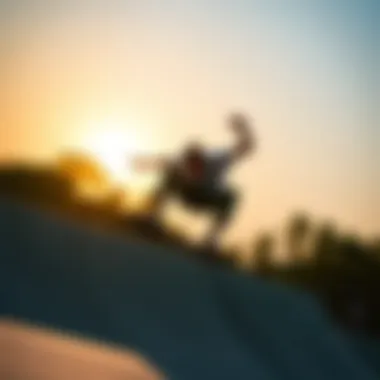
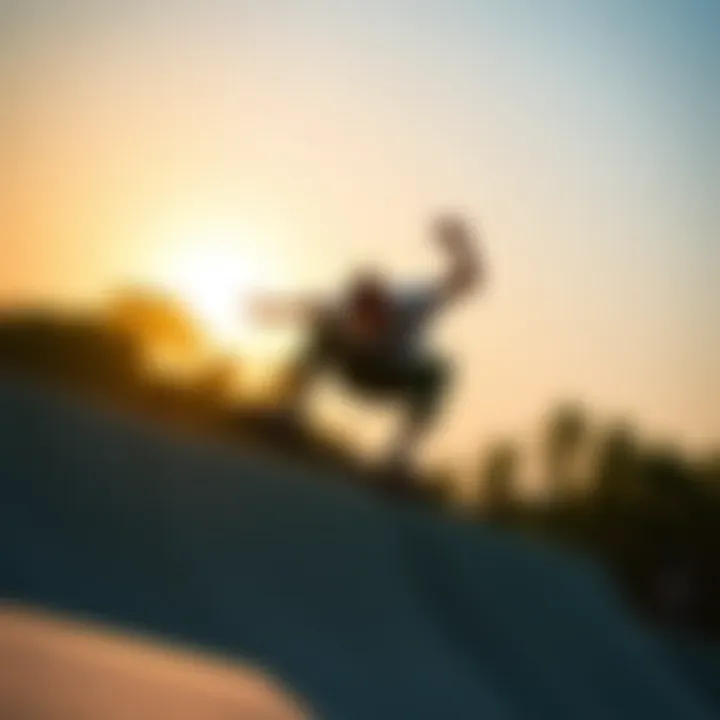
Begin with color correction to fix any imbalances in exposure or saturation.
- White Balance: Adjust the color temperature to ensure whites look white and colors appear vibrant without unrealistic hues.
- Contrast and Saturation: Boost these settings to make your video visually striking, but avoid making colors look artificial.
Once corrections are made, transition to color grading. This step adds a unique style that embodies the spirit of skating.
- Mood Setting: You can opt for a gritty look with muted colors for an urban aesthetic, or go bright and vivid for a lively summer skate session.
- Consistency: Maintain similar tones throughout to help the narrative feel unified.
Ultimately, color can evoke emotions and can steer the viewer’s experience significantly. It’s your brush; paint your narrative.
Exporting Settings
Finally, exporting your finished video should not be taken lightly. This stage is where your edited masterpiece is compressed into a file that can be shared across platforms. The settings you choose can influence both the quality and the size of your video, which subsequently affects how it loads on viewing platforms.
Here are some key considerations for exporting settings:
- Resolution: Opt for 1080p or even 4K if your footage supports it. A higher resolution offers better clarity, especially on larger screens.
- Bitrate: A higher bitrate usually translates to higher quality. However, balance is key; too high may lead to unnecessarily large files for web usage.
- Format: MP4 is often the go-to format for online videos due to its compatibility with most platforms.
After configuring your settings, do a final preview before hitting "export." This ensures you catch any last-minute details that need rectifying. Once satisfied, you can share your creation with the world, embodying the passion and heart of skate culture.
"Finalizing your edit doesn’t just mean putting the finishing touches. It’s about ensuring that your video resonates with viewers and encapsulates the skate spirit."
Distributing Your Skate Video
Distributing your skate video is more than just uploading it to a platform and calling it a day. It’s about sharing your passion, your creativity, and your hard work with the world. In today’s digital landscape, the visibility of your skate video can make or break its reception. This section delves into essential elements of distribution, benefits, and crucial considerations that can elevate your video sharing to new heights.
Choosing the Right Platforms
When it comes to distribution, not all platforms are cut from the same cloth. Each has its unique audience and style, which means you need to choose wisely. Here are some platforms worth considering:
- YouTube: This is the giant in the video-sharing world. It offers extensive reach, diverse content categories, and monetization opportunities. Plus, it allows for detailed analytics which can provide insights for future projects.
- Instagram: A favored choice for short clips and visually engaging content. Utilizing IGTV or Reels can effectively showcase highlights from your video, attracting a younger demographic.
- Facebook: Despite being considered older, it still boasts countless groups and communities specifically for skate enthusiasts. Sharing through these groups can amplify your reach dramatically.
- Vimeo: Known for its high-quality content and supportive community, this platform is great if you're focusing on artistic expression and a more niche audience.
- Reddit: Subreddits focused on skating can be ideal for targeted sharing. Engaging through comments can also help spark discussions and build a communal connection.
Engaging with Your Audience
Engagement doesn’t stop at just putting your video out there; it’s about creating a dialogue. Engaging with your audience can turn a casual viewer into a committed fan. Here’s how to do it effectively:
- Respond to Comments: Show your viewers you value their input. A simple thank you or an acknowledgment of their praise or critique builds a community feeling.
- Use Calls to Action: Encourage viewers to share their thoughts, ask questions, or even submit their skating footage. Phrases like "What was your favorite part?" or "Have you tried this trick?" can spark interest.
- Collaborate with Other Creators: Partnering with fellow skaters or videographers can introduce your work to new audiences. This often leads to sharing each other’s videos and expanding your reach.
- Leverage Social Media: Regularly share updates, behind-the-scenes snippets, and upcoming projects. Platforms like Twitter and TikTok offer quick ways to keep your audience in the loop.
- Create a Unique Hashtag: A catchy hashtag can help categorize your work and encourage viewers to use it when they share content related to your skate video. This can gather user-generated content that can further promote your video.
"Distribution isn't just about throwing your video online; it's about how you connect with viewers long after they hit 'play.'"
By focusing on the platforms and being proactive in audience engagement, the distribution of your skate video can evolve into a rewarding experience not only for you but also for your viewers. These connections can lead to a stronger community buzz, ultimately enhancing the impact of your skate video.
Evaluating Your Work
Evaluating your work is an essential step in the journey of editing skate videos. It’s not just about putting clips together; it’s about viewing your creation with a critical eye. Understanding the nuances of your edit can pave the way for improvements, and ultimately, it helps ensure your final piece resonates with its audience. Emphasizing self-review encourages personal growth in your editing skills and offers fresh perspectives on how you capture skate culture.
Gathering Feedback
One of the most effective ways to assess the quality of your skate video is by gathering feedback from peers and viewers. This can be done through various channels:
- Social Media Platforms: Sharing your work on places like Instagram or Facebook allows for quick responses. You can gauge initial reactions from fellow skaters, friends, or even strangers.
- Skate Workshops or Meetups: Attend local events where you can showcase your video. Engaging with fellow skaters can yield valuable insights. The community often appreciates honest critique, and being in person adds a layer of connection that online feedback may lack.
- Online Forums: Platforms such as Reddit can provide a broader audience for feedback. Subreddits dedicated to skateboarding or video editing can help connect you with enthusiasts who can offer constructive criticism and new ideas.
Each piece of feedback counts. Whether it’s a compliment or critique, analyze the responses to identify recurring themes or suggestions. This collective input can reveal things you might overlook on your own, leading to a more polished final product.
Applying Learnings to Future Edits
Once you’ve gathered feedback, the next step is applying those insights in future projects. It’s not just about correcting mistakes, but about refining your overall approach. Consider these strategies:
- Create a Checklist: Compile your findings from the feedback and outline key points to remember. This checklist can act as a guide for your next video project.
- Experiment with Techniques: If certain editing techniques received positive reactions, explore them more. On the flip side, if some aspects fell short, think about how to tackle them differently in your next endeavor.
- Document Your Progress: Keep track of your editing journey. This could include noting what works and what doesn't, or even re-editing older videos with the new skills you've honed. This practice not only shows progression but can also pump new life into earlier projects that might benefit from a second glance.
By consistently evaluating your work and incorporating feedback, you create a cycle of improvement that enhances your skill set and sharpens your eye for details. It’s an ongoing journey in crafting videos that truly reflect the vibrancy of skateboarding culture.
End
The final section of any skate video editing guide is crucial because it brings together all the threads of the narrative woven throughout the editing process. This is the moment when an editor reflects on their journey—from the initial filming to the meticulous post-production work—and considers the overall impact of their creative choices. Understanding the key points discussed in the article, editors can grasp the importance of refining their work and strive towards excellence in their craft.
Reflecting on the Editing Process
When evaluating one’s own editing process, it is important to look back at the decisions made along the way. This reflection is not merely an exercise; it serves as a pathway for growth.
- Assessing the Narrative: Did the video convey the intended message? Consider how effectively the chosen clips aligned with the overall theme and flow.
- Technical Mastery: Delve into the technical skills acquired during the editing. Were the sound and visual effects successful in enhancing the experience?
- Audience Reception: Take a moment to consider feedback received from viewers. This input provides invaluable insights into how audiences connect with the skate culture depicted.
By acknowledging both successes and areas of improvement, editors not only solidify their understanding of the craft but also pave the way for more polished future projects.
"Growth in creativity is often born from the ashes of self-critique."
Looking Ahead to Future Projects
As one wraps up a project, it is beneficial to keep an eye on the horizon for upcoming opportunities. The landscape of skate video editing is always evolving, making it essential for editors to stay current and adaptable. Here are several factors to contemplate:
- Emerging Trends: Stay up to date with the latest trends in both skate culture and video editing. Exploring new styles or techniques can set a project apart.
- Experimentation: Don’t shy away from experimenting with different editing methods. Whether it's altering pacing or trying new software, pushing boundaries can yield unexpected results.
- Building a Portfolio: Each completed project is a stepping stone to future work. Curate a selection of your best videos, showcasing diverse skills to attract potential collaborators or sponsors.
- Networking Opportunities: Engaging with the skateboard community, attending events, and connecting with fellow editors can lead to collaborative ventures and enhanced visibility.
By maintaining a forward-thinking perspective, editors can ensure that they're not just reacting to trends, but possibly setting them. Through reflection and anticipation, the journey of editing skate videos remains both rewarding and dynamic.















